P600A Diode: P600A Datasheet, Equivalent, Pinout
Vishay Semiconductor Diodes Division
Standard Diode Rectifier Standard Recovery >500ns, > 200mA (Io) 900mV @ 6A -50°C~150°C 5μA @ 50V 2-Termination Tape & Reel (TR) P600, Axial Through Hole









Standard Diode Rectifier Standard Recovery >500ns, > 200mA (Io) 900mV @ 6A -50°C~150°C 5μA @ 50V 2-Termination Tape & Reel (TR) P600, Axial Through Hole
P600A Diode is the general-purpose plastic rectifier. This article will unlock its pinout, datasheet, equivalent and more details about P600A.

Diode to Temperature Sensor
P600A Pinout

P600A Pinout
P600A Description
The P600A is part of the Vishay P600x family, which is a line of general-purpose plastic rectifiers housed in a P600 epoxy box. They are intended to be used for general-purpose rectification of power supplies, inverters, converters, and freewheeling diodes.
P600A Feature
Peak Maximum Recurring Voltage Reverse: 50 V
6 A is the maximum average forward output current
Forward Voltage Maximum At 1.0A DC, the dropper element is 0.95 V
Typical Intersection 150 pF capacitance
R-6 package
2.08 grams in weight
Storage and operation Temperature range: -65...+175 ℃
P600A Application
Suitable for general-purpose rectification of power supplies, inverters, converters, and freewheeling diodes.
P600A Equivalent
P600A can be replaced by P600M, P600K, P600J, P600G, P600D, P600B, FR607, FR606, FR605, FR604, FR603, FR602, FR601, 6A8, 6A6, 6A4, 6A2, 6A10, 6A1, 6A05
P600A Package

P600A Package
P600A Manufacturer
Vishay's product portfolio is an unmatched collection of discrete semiconductors (diodes, MOSFETs, and optoelectronics) and passive components (resistors, inductors, and capacitors). These components are used in virtually all types of electronic devices and equipment in the industrial, computing, automotive, consumer, telecommunications, military, aerospace, and medical markets. Vishay is proud to be a major partner with Digi-Key.
Specifications
- TypeParameter
- Factory Lead Time18 Weeks
- Mount
In electronic components, the term "Mount" typically refers to the method or process of physically attaching or fixing a component onto a circuit board or other electronic device. This can involve soldering, adhesive bonding, or other techniques to secure the component in place. The mounting process is crucial for ensuring proper electrical connections and mechanical stability within the electronic system. Different components may have specific mounting requirements based on their size, shape, and function, and manufacturers provide guidelines for proper mounting procedures to ensure optimal performance and reliability of the electronic device.
Through Hole - Mounting Type
The "Mounting Type" in electronic components refers to the method used to attach or connect a component to a circuit board or other substrate, such as through-hole, surface-mount, or panel mount.
Through Hole - Package / Case
refers to the protective housing that encases an electronic component, providing mechanical support, electrical connections, and thermal management.
P600, Axial - Number of Pins600
- Diode Element Material
The parameter "Diode Element Material" refers to the specific semiconductor material used in the construction of a diode. This material determines the electrical characteristics and performance of the diode, including its forward voltage drop, reverse breakdown voltage, and switching speed. Common diode element materials include silicon, germanium, and gallium arsenide, each offering different advantages for various applications. The choice of material impacts the diode's efficiency, thermal stability, and overall suitability for specific electronic circuits.
SILICON - Number of Elements1
- Packaging
Semiconductor package is a carrier / shell used to contain and cover one or more semiconductor components or integrated circuits. The material of the shell can be metal, plastic, glass or ceramic.
Tape & Reel (TR) - Published2014
- JESD-609 Code
The "JESD-609 Code" in electronic components refers to a standardized marking code that indicates the lead-free solder composition and finish of electronic components for compliance with environmental regulations.
e3 - Pbfree Code
The "Pbfree Code" parameter in electronic components refers to the code or marking used to indicate that the component is lead-free. Lead (Pb) is a toxic substance that has been widely used in electronic components for many years, but due to environmental concerns, there has been a shift towards lead-free alternatives. The Pbfree Code helps manufacturers and users easily identify components that do not contain lead, ensuring compliance with regulations and promoting environmentally friendly practices. It is important to pay attention to the Pbfree Code when selecting electronic components to ensure they meet the necessary requirements for lead-free applications.
yes - Part Status
Parts can have many statuses as they progress through the configuration, analysis, review, and approval stages.
Active - Moisture Sensitivity Level (MSL)
Moisture Sensitivity Level (MSL) is a standardized rating that indicates the susceptibility of electronic components, particularly semiconductors, to moisture-induced damage during storage and the soldering process, defining the allowable exposure time to ambient conditions before they require special handling or baking to prevent failures
1 (Unlimited) - Number of Terminations2
- ECCN Code
An ECCN (Export Control Classification Number) is an alphanumeric code used by the U.S. Bureau of Industry and Security to identify and categorize electronic components and other dual-use items that may require an export license based on their technical characteristics and potential for military use.
EAR99 - Terminal Finish
Terminal Finish refers to the surface treatment applied to the terminals or leads of electronic components to enhance their performance and longevity. It can improve solderability, corrosion resistance, and overall reliability of the connection in electronic assemblies. Common finishes include nickel, gold, and tin, each possessing distinct properties suitable for various applications. The choice of terminal finish can significantly impact the durability and effectiveness of electronic devices.
Matte Tin (Sn) - Max Operating Temperature
The Maximum Operating Temperature is the maximum body temperature at which the thermistor is designed to operate for extended periods of time with acceptable stability of its electrical characteristics.
150°C - Min Operating Temperature
The "Min Operating Temperature" parameter in electronic components refers to the lowest temperature at which the component is designed to operate effectively and reliably. This parameter is crucial for ensuring the proper functioning and longevity of the component, as operating below this temperature may lead to performance issues or even damage. Manufacturers specify the minimum operating temperature to provide guidance to users on the environmental conditions in which the component can safely operate. It is important to adhere to this parameter to prevent malfunctions and ensure the overall reliability of the electronic system.
-50°C - Applications
The parameter "Applications" in electronic components refers to the specific uses or functions for which a component is designed. It encompasses various fields such as consumer electronics, industrial automation, telecommunications, automotive, and medical devices. Understanding the applications helps in selecting the right components for a particular design based on performance, reliability, and compatibility requirements. This parameter also guides manufacturers in targeting their products to relevant markets and customer needs.
GENERAL PURPOSE - Additional Feature
Any Feature, including a modified Existing Feature, that is not an Existing Feature.
FREE WHEELING DIODE - HTS Code
HTS (Harmonized Tariff Schedule) codes are product classification codes between 8-1 digits. The first six digits are an HS code, and the countries of import assign the subsequent digits to provide additional classification. U.S. HTS codes are 1 digits and are administered by the U.S. International Trade Commission.
8541.10.00.80 - Terminal Form
Occurring at or forming the end of a series, succession, or the like; closing; concluding.
WIRE - Base Part Number
The "Base Part Number" (BPN) in electronic components serves a similar purpose to the "Base Product Number." It refers to the primary identifier for a component that captures the essential characteristics shared by a group of similar components. The BPN provides a fundamental way to reference a family or series of components without specifying all the variations and specific details.
P600A - Pin Count
a count of all of the component leads (or pins)
2 - JESD-30 Code
JESD-30 Code refers to a standardized descriptive designation system established by JEDEC for semiconductor-device packages. This system provides a systematic method for generating designators that convey essential information about the package's physical characteristics, such as size and shape, which aids in component identification and selection. By using JESD-30 codes, manufacturers and engineers can ensure consistency and clarity in the specification of semiconductor packages across various applications and industries.
O-PALF-W2 - Element Configuration
The distribution of electrons of an atom or molecule (or other physical structure) in atomic or molecular orbitals.
Single - Speed
In electronic components, "Speed" typically refers to the rate at which data can be processed or transferred within the component. It is a measure of how quickly the component can perform its functions, such as executing instructions or transmitting signals. Speed is often specified in terms of frequency, such as clock speed in processors or data transfer rate in memory modules. Higher speed components can perform tasks more quickly, leading to improved overall performance in electronic devices. It is an important parameter to consider when designing or selecting electronic components for specific applications.
Standard Recovery >500ns, > 200mA (Io) - Diode Type
In electronic components, the parameter "Diode Type" refers to the specific type or configuration of a diode, which is a semiconductor device that allows current to flow in one direction only. There are various types of diodes, each designed for specific applications and functions. Common diode types include rectifier diodes, zener diodes, light-emitting diodes (LEDs), and Schottky diodes, among others. The diode type determines the diode's characteristics, such as forward voltage drop, reverse breakdown voltage, and maximum current rating, making it crucial for selecting the right diode for a particular circuit or application. Understanding the diode type is essential for ensuring proper functionality and performance in electronic circuits.
Standard - Current - Reverse Leakage @ Vr
Current - Reverse Leakage @ Vr is a parameter that describes the amount of current that flows in the reverse direction through a diode or other semiconductor component when a reverse voltage (Vr) is applied across it. This leakage current is typically very small, but it is important to consider in electronic circuits as it can affect the overall performance and reliability of the component. The reverse leakage current is influenced by factors such as the material properties of the semiconductor, temperature, and the magnitude of the reverse voltage applied. Manufacturers provide this parameter in datasheets to help engineers and designers understand the behavior of the component in reverse bias conditions.
5μA @ 50V - Voltage - Forward (Vf) (Max) @ If
The parameter "Voltage - Forward (Vf) (Max) @ If" refers to the maximum voltage drop across a diode when it is forward-biased and conducting a specified forward current (If). It indicates the maximum potential difference the diode can withstand while allowing current to flow in the forward direction without breaking down. This value is crucial for designing circuits as it helps determine how much voltage will be lost across the diode during operation. Higher Vf values can lead to reduced efficiency in power applications, making this parameter essential for optimizing circuit performance.
900mV @ 6A - Case Connection
Case Connection refers to the method by which an electronic component's case or housing is connected to the electrical circuit. This connection is important for grounding purposes, mechanical stability, and heat dissipation. The case connection can vary depending on the type of component and its intended application. It is crucial to ensure a secure and reliable case connection to maintain the overall performance and safety of the electronic device.
ISOLATED - Forward Current
Current which flows upon application of forward voltage.
22A - Operating Temperature - Junction
Operating Temperature - Junction refers to the maximum temperature at which the junction of an electronic component can safely operate without causing damage or performance degradation. This parameter is crucial for determining the reliability and longevity of the component, as excessive heat can lead to thermal stress and failure. Manufacturers specify the operating temperature range to ensure that the component functions within safe limits under normal operating conditions. It is important for designers and engineers to consider the operating temperature - junction when selecting and using electronic components to prevent overheating and ensure optimal performance.
-50°C~150°C - Max Surge Current
Surge current is a peak non repetitive current. Maximum (peak or surge) forward current = IFSM or if(surge), the maximum peak amount of current the diode is able to conduct in forward bias mode.
400A - Output Current-Max
Output Current-Max is a parameter in electronic components that specifies the maximum amount of current that can be safely drawn from the output of the component without causing damage. It is an important specification to consider when designing circuits to ensure that the component can handle the required current without overheating or failing. Exceeding the maximum output current can lead to performance issues, component damage, or even complete failure of the circuit. It is crucial to adhere to the specified maximum output current to ensure the reliable operation of the electronic component and the overall circuit.
6A - Forward Voltage
the amount of voltage needed to get current to flow across a diode.
1.3V - Max Reverse Voltage (DC)
Max Reverse Voltage (DC) refers to the maximum voltage that a semiconductor device, such as a diode, can withstand in the reverse bias direction without failing. Exceeding this voltage can lead to breakdown and potential damage to the component. It is a critical parameter in circuit design to ensure reliability and prevent failure when the device is subjected to reverse voltage conditions.
50V - Average Rectified Current
Mainly used to characterize alternating voltage and current. It can be computed by averaging the absolute value of a waveform over one full period of the waveform.
6A - Number of Phases1
- Reverse Recovery Time
Reverse Recovery Time is a key parameter in semiconductor devices, particularly diodes and transistors. It refers to the time taken for a diode or transistor to switch from conducting in the forward direction to blocking in the reverse direction when the polarity of the voltage across the device is reversed. This parameter is crucial in applications where fast switching speeds are required, as a shorter reverse recovery time allows for quicker response times and improved efficiency. Reverse Recovery Time is typically specified in datasheets for electronic components and is an important consideration in circuit design to ensure optimal performance and reliability.
2.5 μs - Peak Reverse Current
The maximum voltage that a diode can withstand in the reverse direction without breaking down or avalanching.If this voltage is exceeded the diode may be destroyed. Diodes must have a peak inverse voltage rating that is higher than the maximum voltage that will be applied to them in a given application.
5μA - Max Repetitive Reverse Voltage (Vrrm)
The Max Repetitive Reverse Voltage (Vrrm) is a crucial parameter in electronic components, particularly in diodes and transistors. It refers to the maximum voltage that can be applied across the component in the reverse direction without causing damage. This parameter is important for ensuring the proper functioning and longevity of the component in circuits where reverse voltage may be present. Exceeding the Vrrm rating can lead to breakdown and failure of the component, so it is essential to carefully consider this specification when designing or selecting components for a circuit.
50V - Capacitance @ Vr, F
Capacitance @ Vr, F refers to the capacitance value of a capacitor measured at a specified rated voltage (Vr). It indicates how much electrical charge the capacitor can store per volt when subjected to this voltage. This parameter is essential for understanding the behavior of capacitors in circuits, particularly under different voltage conditions, and ensures that the component operates within its safe limits. The unit of measurement is Farads (F), which quantifies the capacitor's ability to hold an electrical charge.
150pF @ 4V 1MHz - Peak Non-Repetitive Surge Current
Peak Non-Repetitive Surge Current is a specification in electronic components that refers to the maximum current that the component can withstand for a short duration without sustaining damage. This surge current typically occurs as a result of sudden voltage spikes or transient events in the circuit. It is important to consider this parameter when designing or selecting components to ensure they can handle occasional high-current surges without failing. The value of Peak Non-Repetitive Surge Current is usually specified in amperes and is crucial for protecting the component and maintaining the overall reliability of the circuit.
400A - Reverse Voltage
the voltage drop across the diode if the voltage at the cathode is more positive than the voltage at the anode
50V - Recovery Time
Recovery time in electronic components refers to the time it takes for a device to return to its normal operating state after being subjected to a specific stimulus or disturbance. This parameter is particularly important in devices such as diodes, transistors, and capacitors, where the recovery time can impact the overall performance and reliability of the component. A shorter recovery time indicates that the component can quickly recover from a transient event, ensuring proper functionality and minimizing any potential disruptions in the circuit. Manufacturers typically provide recovery time specifications to help engineers and designers select components that meet the requirements of their specific applications.
2.5 μs - Radiation Hardening
Radiation hardening is the process of making electronic components and circuits resistant to damage or malfunction caused by high levels of ionizing radiation, especially for environments in outer space (especially beyond the low Earth orbit), around nuclear reactors and particle accelerators, or during nuclear accidents or nuclear warfare.
No - RoHS Status
RoHS means “Restriction of Certain Hazardous Substances” in the “Hazardous Substances Directive” in electrical and electronic equipment.
ROHS3 Compliant - Lead Free
Lead Free is a term used to describe electronic components that do not contain lead as part of their composition. Lead is a toxic material that can have harmful effects on human health and the environment, so the electronics industry has been moving towards lead-free components to reduce these risks. Lead-free components are typically made using alternative materials such as silver, copper, and tin. Manufacturers must comply with regulations such as the Restriction of Hazardous Substances (RoHS) directive to ensure that their products are lead-free and environmentally friendly.
Lead Free
Parts with Similar Specs
- ImagePart NumberManufacturerMountPackage / CaseForward VoltageAverage Rectified CurrentReverse Recovery TimeRoHS StatusMoisture Sensitivity Level (MSL)Factory Lead TimeView Compare
P600A-E3/54
Through Hole
P600, Axial
1.3 V
6 A
2.5 μs
ROHS3 Compliant
1 (Unlimited)
18 Weeks
Datasheet PDF
- RohsStatement :
- Datasheets :
- PCN Assembly/Origin :
What is the anode of the P600A diode?
[+].
What is the tip of the triangle with the line on top of the P600A diode?
The cathode.
What is the P600A diode like?
One-way electric valve.
What type of box is the P600A housed in?
P600 epoxy box.
What is the P600A part of?
Vishay P600x.
What is the operating junction temperature of P600A?
-50°C to +150°C.
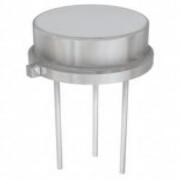 2N5109 NPN Transistor: Datasheet, 2N5109 RF Amplifier, Replacement
2N5109 NPN Transistor: Datasheet, 2N5109 RF Amplifier, Replacement10 December 20215745
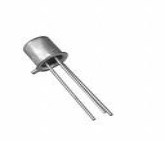 2N2222 Switches: Pinout, Datasheet and Schematic
2N2222 Switches: Pinout, Datasheet and Schematic12 July 202111439
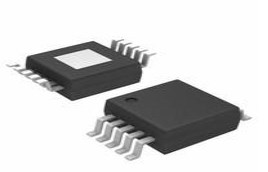 PCA9615 Bus Buffer: Datasheet, Pinout and Applications
PCA9615 Bus Buffer: Datasheet, Pinout and Applications03 September 20213089
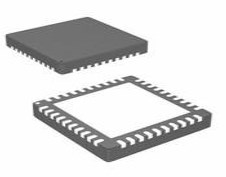 MC34844AEP LED Driver: Pinout, Applications and Datasheet
MC34844AEP LED Driver: Pinout, Applications and Datasheet13 September 2021697
![MCP6022 Op Amps: Circuit, Pinout, and Datasheet [Video]](https://res.utmel.com/Images/Article/6f83275d-7623-4529-93f1-012e979a7d1d.png) MCP6022 Op Amps: Circuit, Pinout, and Datasheet [Video]
MCP6022 Op Amps: Circuit, Pinout, and Datasheet [Video]29 October 20214995
![What you need to know about the use of the BS250 P-Channel MOSFET[FAQ]](https://res.utmel.com/Images/Article/a9cca941-e618-4ad6-ae31-15bcc55bff75.jpg) What you need to know about the use of the BS250 P-Channel MOSFET[FAQ]
What you need to know about the use of the BS250 P-Channel MOSFET[FAQ]31 March 20223839
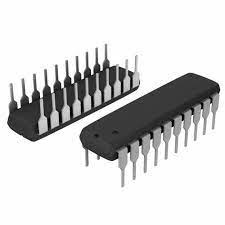 AD7701BNZ ADC: Pinout, Specification, and Datasheet
AD7701BNZ ADC: Pinout, Specification, and Datasheet01 June 2021901
 STM32F429IIT6 STMicroelectronics: Specification, Datasheet, Manufacturer And Features
STM32F429IIT6 STMicroelectronics: Specification, Datasheet, Manufacturer And Features11 April 2022771
 What is 232\485\422 Communication? Common problems of Serial Communication
What is 232\485\422 Communication? Common problems of Serial Communication29 April 20221667
 Everything You Need to Know about Connectors
Everything You Need to Know about Connectors07 September 20216207
 Analyzing Temperature Parameters of Si, SiC and GaN Power Devices
Analyzing Temperature Parameters of Si, SiC and GaN Power Devices09 September 20231051
 Power Up Your Savings this Christmas - Utmel's Exclusive Holiday Deals
Power Up Your Savings this Christmas - Utmel's Exclusive Holiday Deals30 October 2025288
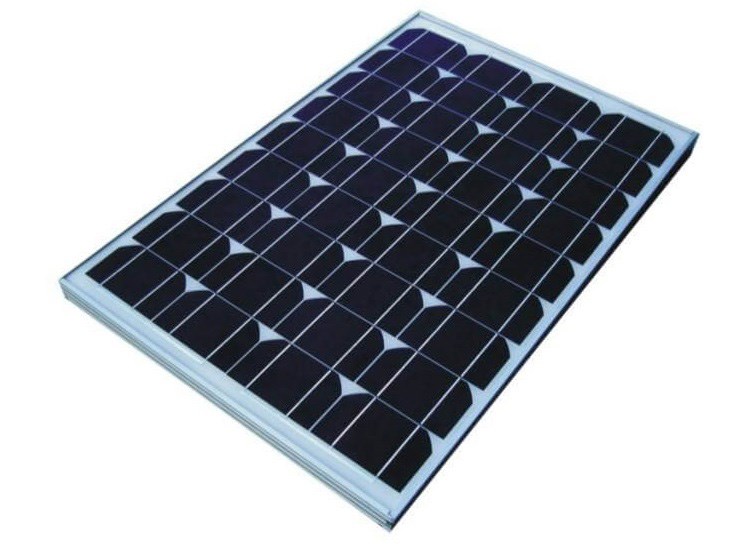 How do Solar Cells Work?
How do Solar Cells Work?20 November 20202763
 H-bridge: Working, Circuits and Applications
H-bridge: Working, Circuits and Applications03 December 202141606
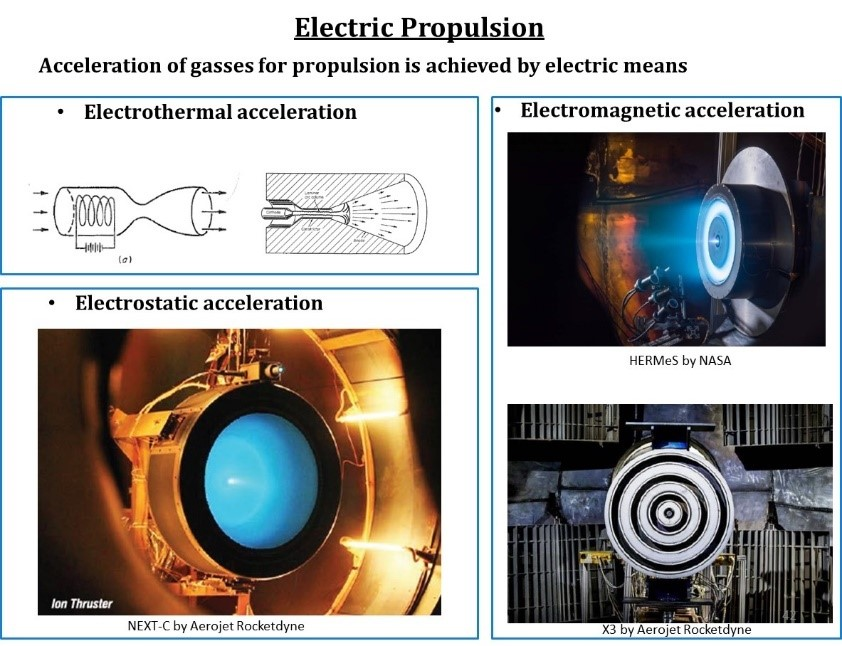 The Role of SiC in Extended Space Missions
The Role of SiC in Extended Space Missions20 September 20241992
 Oregon's Semiconductor Boost: Governor Announces $240 Million Investment
Oregon's Semiconductor Boost: Governor Announces $240 Million Investment06 October 20231449
Vishay Semiconductor Diodes Division
In Stock
United States
China
Canada
Japan
Russia
Germany
United Kingdom
Singapore
Italy
Hong Kong(China)
Taiwan(China)
France
Korea
Mexico
Netherlands
Malaysia
Austria
Spain
Switzerland
Poland
Thailand
Vietnam
India
United Arab Emirates
Afghanistan
Åland Islands
Albania
Algeria
American Samoa
Andorra
Angola
Anguilla
Antigua & Barbuda
Argentina
Armenia
Aruba
Australia
Azerbaijan
Bahamas
Bahrain
Bangladesh
Barbados
Belarus
Belgium
Belize
Benin
Bermuda
Bhutan
Bolivia
Bonaire, Sint Eustatius and Saba
Bosnia & Herzegovina
Botswana
Brazil
British Indian Ocean Territory
British Virgin Islands
Brunei
Bulgaria
Burkina Faso
Burundi
Cabo Verde
Cambodia
Cameroon
Cayman Islands
Central African Republic
Chad
Chile
Christmas Island
Cocos (Keeling) Islands
Colombia
Comoros
Congo
Congo (DRC)
Cook Islands
Costa Rica
Côte d’Ivoire
Croatia
Cuba
Curaçao
Cyprus
Czechia
Denmark
Djibouti
Dominica
Dominican Republic
Ecuador
Egypt
El Salvador
Equatorial Guinea
Eritrea
Estonia
Eswatini
Ethiopia
Falkland Islands
Faroe Islands
Fiji
Finland
French Guiana
French Polynesia
Gabon
Gambia
Georgia
Ghana
Gibraltar
Greece
Greenland
Grenada
Guadeloupe
Guam
Guatemala
Guernsey
Guinea
Guinea-Bissau
Guyana
Haiti
Honduras
Hungary
Iceland
Indonesia
Iran
Iraq
Ireland
Isle of Man
Israel
Jamaica
Jersey
Jordan
Kazakhstan
Kenya
Kiribati
Kosovo
Kuwait
Kyrgyzstan
Laos
Latvia
Lebanon
Lesotho
Liberia
Libya
Liechtenstein
Lithuania
Luxembourg
Macao(China)
Madagascar
Malawi
Maldives
Mali
Malta
Marshall Islands
Martinique
Mauritania
Mauritius
Mayotte
Micronesia
Moldova
Monaco
Mongolia
Montenegro
Montserrat
Morocco
Mozambique
Myanmar
Namibia
Nauru
Nepal
New Caledonia
New Zealand
Nicaragua
Niger
Nigeria
Niue
Norfolk Island
North Korea
North Macedonia
Northern Mariana Islands
Norway
Oman
Pakistan
Palau
Palestinian Authority
Panama
Papua New Guinea
Paraguay
Peru
Philippines
Pitcairn Islands
Portugal
Puerto Rico
Qatar
Réunion
Romania
Rwanda
Samoa
San Marino
São Tomé & Príncipe
Saudi Arabia
Senegal
Serbia
Seychelles
Sierra Leone
Sint Maarten
Slovakia
Slovenia
Solomon Islands
Somalia
South Africa
South Sudan
Sri Lanka
St Helena, Ascension, Tristan da Cunha
St. Barthélemy
St. Kitts & Nevis
St. Lucia
St. Martin
St. Pierre & Miquelon
St. Vincent & Grenadines
Sudan
Suriname
Svalbard & Jan Mayen
Sweden
Syria
Tajikistan
Tanzania
Timor-Leste
Togo
Tokelau
Tonga
Trinidad & Tobago
Tunisia
Turkey
Turkmenistan
Turks & Caicos Islands
Tuvalu
U.S. Outlying Islands
U.S. Virgin Islands
Uganda
Ukraine
Uruguay
Uzbekistan
Vanuatu
Vatican City
Venezuela
Wallis & Futuna
Yemen
Zambia
Zimbabwe

